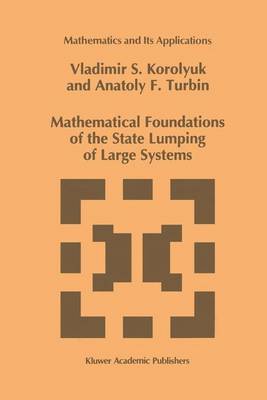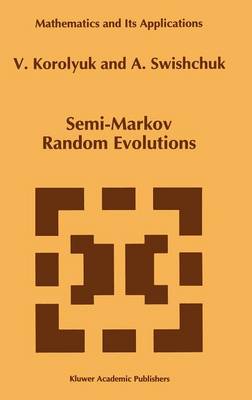Mathematics and Its Applications
2 primary works
Book 264
Mathematical Foundations of the State Lumping of Large Systems
by Vladimir S Koroliuk and Anatoly F. Turbin
Published 31 August 1993
During the investigation of large systems described by evolution equations, we encounter many problems. Of special interest is the problem of "high dimensionality" or, more precisely, the problem of the complexity of the phase space. The notion of the "comple xity of the. phase space" includes not only the high dimensionality of, say, a system of linear equations which appear in the mathematical model of the system (in the case when the phase space of the model is finite but very large), as this is usually understood, but also the structure of the phase space itself, which can be a finite, countable, continual, or, in general, arbitrary set equipped with the structure of a measurable space. Certainly, 6 6 this does not mean that, for example, the space (R 6, ( ), where 6 is a a-algebra of Borel sets in R 6, considered as a phase space of, say, a six-dimensional Wiener process (see Gikhman and Skorokhod [1]), has a "complex structure". But this will be true if the 6 same space (R 6, ( ) is regarded as a phase space of an evolution system describing, for example, the motion of a particle with small mass in a viscous liquid (see Chandrasek har [1]).
Book 308
Semi-Markov Random Evolutions
by Vladimir S Koroliuk and Anatoly Svishchuk
Published 30 November 1994
The evolution of systems in random media is a broad and fruitful field for the applica tions of different mathematical methods and theories. This evolution can be character ized by a semigroup property. In the abstract form, this property is given by a semigroup of operators in a normed vector (Banach) space. In the practically boundless variety of mathematical models of the evolutionary systems, we have chosen the semi-Markov ran dom evolutions as an object of our consideration. The definition of the evolutions of this type is based on rather simple initial assumptions. The random medium is described by the Markov renewal processes or by the semi Markov processes. The local characteristics of the system depend on the state of the ran dom medium. At the same time, the evolution of the system does not affect the medium. Hence, the semi-Markov random evolutions are described by two processes, namely, by the switching Markov renewal process, which describes the changes of the state of the external random medium, and by the switched process, i.e., by the semigroup of oper ators describing the evolution of the system in the semi-Markov random medium.

